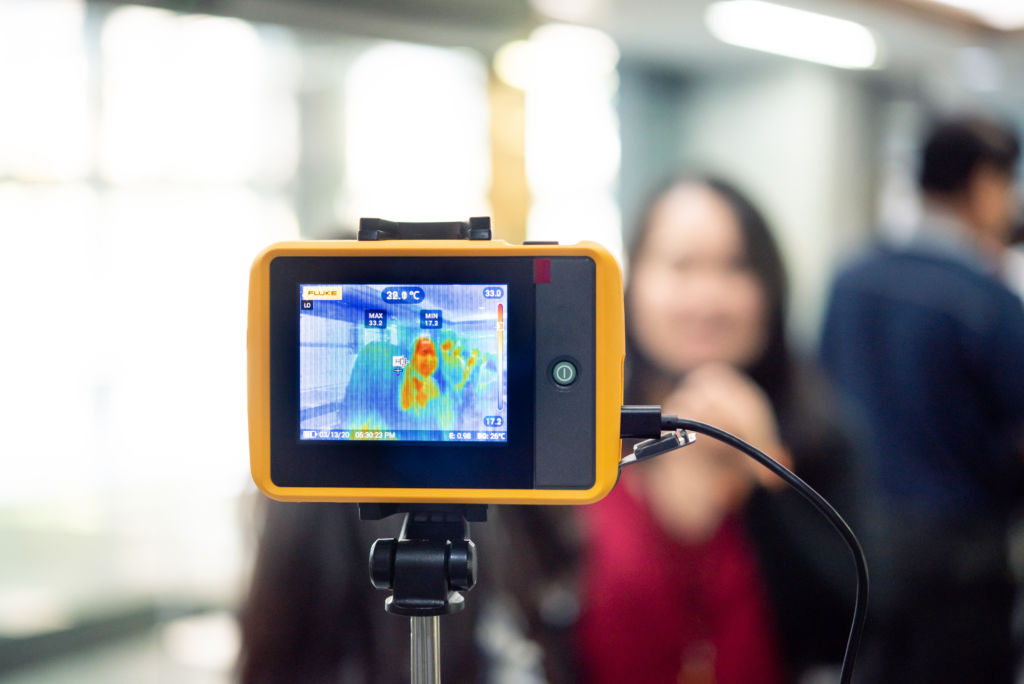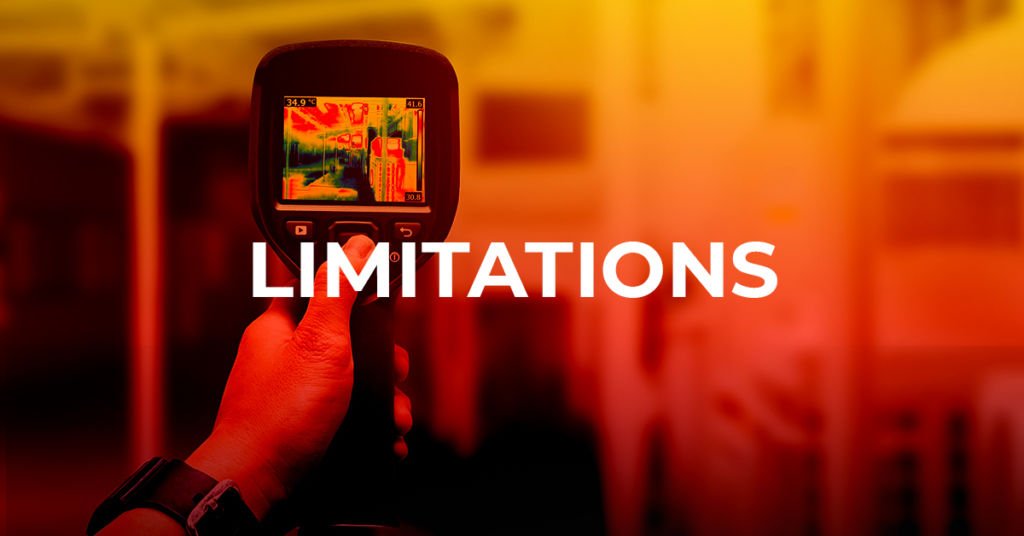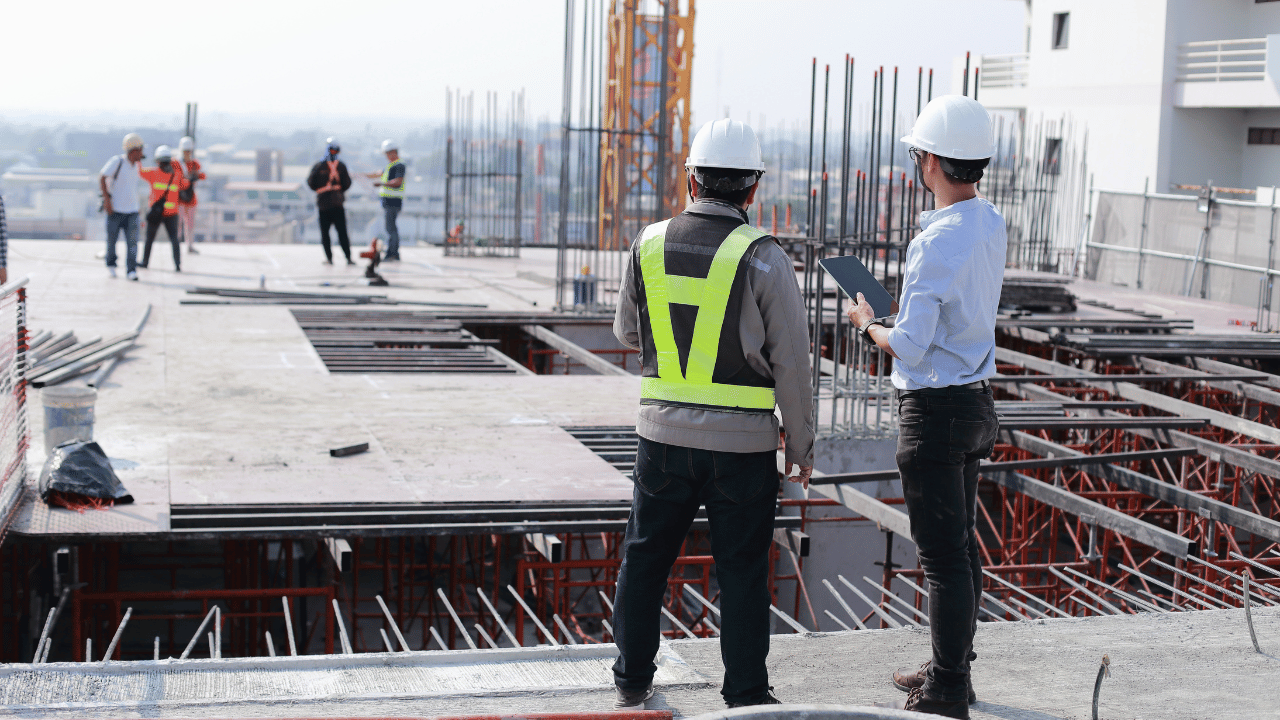
Infrared Thermography: An Exclusive Guide That You’ll Need (2024)
John Souffront

The oil and gas sector extensively uses infrared thermography as an inspection tool for condition monitoring and predictive maintenance. However, the fact that infrared technology does not need to be in physical contact with the piece of machinery that needs monitoring confers several benefits over the more conventional methods of visual inspection and other methods.
It is a nondestructive testing type that measures temperature variations of a component as heat moves through, from, or toward that component. IR thermography is known as thermal imaging, infrared thermometry, thermal testing, or infrared thermography testing.
In the post we have for you today, we will learn all there is to know about IR thermography. So let’s get down to business without further ado and begin with a basic overview of IR thermography.
Infrared Thermography Meaning
The process of “viewing” and “measuring” invisible infrared radiation emitted from an object is known as infrared thermography. It involves the use of an infrared imaging and measurement camera.
As a result of its wavelength being too long to be detected by the sensors in our eyes, the human eye cannot see thermal or infrared radiation. We interpret this region of the electromagnetic spectrum as heat.
In contrast to visible light, everything with a temperature higher than absolute zero emits infrared electromagnetic radiation. Infrared radiation is emitted by even very cold objects, such as ice cubes. The amount of infrared radiation release increases with object temperature, and our eyes cannot perceive certain things, but the infrared thermography camera can!
Discussing briefly about IR thermography uses and applications, some notable examples include:
- Earth science imaging
- Law and security imaging
- Medical Imaging
- Chemical Imaging
- Machine condition monitoring
- Electrical system monitoring
- Fluid system monitoring
IR thermography’s main objective is to identify inefficiencies and flaws in machinery by detecting anomalous heat patterns within the machine and confirming that it is operating normally.
Asset managers in charge of condition monitoring can significantly benefit from employing IR thermography to inspect mechanical equipment.
However, despite the ease of use of infrared imagers, deciphering the data they generate can be a little more challenging. Therefore, it is important to understand how infrared imagers work and the heat transfer and radiometry process.
Next, we proceed toward IR thermography principles and applications to understand its functioning and use in different areas.
You might also want to read: When and Why Should You Go For An Infrared Thermography Inspection
The Operating Principle of Infrared Thermography
According to the operating principle of infrared thermography, infrared sensors typically calculate temperature by focusing on infrared energy. It is a part of the electromagnetic radiation that every item emits as its temperature rises over zero.
This radiation relates to the object in a manner proportional to its internal temperature. The object’s radiation beams are concentrated on a detection component through the thermographer’s optics.
The radiation is proportionate to these electrical signals. An analysis of these signals takes place to provide output signals directly showing the temperature. The obtained information may be there on a computer screen or transmitted to a control system via a connecting link.
Planck’s radiation law is the foundation for measuring infrared temperature. Its temperature and wavelength are closely related to the spectral radiation that a black body emits into space.
Even using the Stefan-Boltzmann law, scientists could simplify the equation’s interpretation. It aids in clarifying how the detector’s electric signal and an object’s temperature relate to one another.
Infrared Thermography Applications
The following are some essential applications of infrared thermography you must understand.
Evaluation and Testing
It is now possible to quickly detect and receive precise temperature readings through infrared technology, which is crucial for research and testing applications.
To start an effort to comprehend the fleeting phenomenon underlying combusting particles, research scholars have widely used thermography cameras, infrared thermometers, pyrometers, and other devices to monitor the temperature of individual particles in coal combustion reactors.
The development of a new low-emission burner technology will be aided by this, potentially reducing carbon footprints. As a smart sensor technology that monitors and manages the temperature process, this technology has been approved for use in the industrial setting.
Injection Molding
Temperature directly correlates with the quality of applications for 3D printing or completed goods in injection molding. An essential part of producing defect-free goods is regulating the temperature of the production environment.
In the manufacturing of automotive components, when even the smallest flaw is intolerable, it is tremendously beneficial. An online system uses a thermal imager to gauge the temperature of the distribution products’ surface.
Assemblies that don’t adhere to the established temperature range can be immediately rejected using the technology synchronized with the PLC system.
Manufacturing
In the manufacturing sector, the temperature is a crucial factor that affects the product’s quality. Using glass, as an illustration, the temperature of the molten glass has a beneficial impact on the end product’s quality.
To ensure that the process temperature is properly maintained at the casting level, it is essential in the metal manufacturing business to keep an eye on the temperature of the molten metals. Infrared sensors are crucial in this situation.
Condition Monitoring
The most desirable technology for this kind of preventive maintenance is a thermal imaging camera, which can maintain the equipment’s overall health and prevent any unexpected damage or disruptions in the manufacturing process.
It can useful to identify hot spots in essential process equipment that professionals can fix and restore beforehand to prevent a catastrophic failure of the machinery or production process. Moreover, it reduces expenses too.
Infrared Thermography Benefits
Professionals can quickly scan large areas using infrared thermography testing, which has the advantage over destructive testing methods in that no destruction is required. In addition, significant time, labor, work, and equipment savings take place.
Infrared thermography is superior to other non-destructive approaches in several ways. For example, since the infrared thermographic equipment does not generate radiation and merely records the infrared radiation that the evaluated material emits, there is no risk associated with using it.
Unlike most non-destructive methods, infrared thermography is an area examining methodology rather than a point or line testing method. Additionally, both daytime and nighttime infrared thermographic testing are possible.
Because professionals use it in condition monitoring, infrared thermography has another advantage. Condition monitoring uses infrared thermography to quickly identify various concerns, including mechanical faults, thermal abnormalities, and issues connected to excessive heat.
As a result of its reliance on infrared technologies, thermography cannot reach great depths. But, of course, that constitutes one of the technique’s primary drawbacks. Finally, the environment significantly impacts outdoor infrared thermographic studies using the passive method.
The distribution of an object’s surface temperatures is used in thermography inspections. There is no sign of a problem if the surface temperature is constant, devoid of temperature changes. Because of this, it is constrained in some applications.
To mention in brief, the key benefits of Infrared thermography testing include:
- During production, inspection is possible.
- Fast and non-contact inspection
- Online records are present
- Costs are comparatively inexpensive.
Infrared Thermography Limitations
Healthcare
Breast cancers, vascular disease, and neuromusculoskeletal problems can all be detected with thermography. With the help of infrared light, it can take thousands of photos while collecting imaging from a certain distance from the body.
The heat emitted by soft tissue can be measured using thermography. It can then be contrasted with a different bodily part having similar anatomies, such as the right arm and left arm. Before and after exercise, it can measure blood flow, indicating the presence of blockages.
Thermography has demonstrated that it is 69.7% percent accurate at detecting breast cancer. Images are challenging to interpret and require a highly skilled specialist, which is the problem.
Training
A person isn’t a thermographer just by receiving basic training in camera operation. Like passing your driving exam, obtaining a new license does not automatically make you a skilled driver.
Even though a thermographer can comprehend the thermal colors and the physics underlying the image, they are unaware of the thermodynamic characteristics of a portal frame, composite clad building.
Therefore, it is crucial to understand the methods of building and the materials that are used.
A capability that few companies possess is the ability to offer an accurate interpretation of the photos. Even less frequently offered is the service of quantifying the photos.
How to Leverage Infrared Thermography?
Infrared thermography is an invaluable instrument for monitoring conditions and performing preventive maintenance.
It not only enables the detection of thermal anomalies in devices but also does it in a hands-off, non-intrusive manner while still providing data in real time.
Thermographers often use one of the three techniques when conducting thermal inspections: baseline, thermal trending, or comparative.
Depending on the equipment you’re evaluating and the kind of data you want to view, you’ll need to choose a method.
Baseline thermography
Taking temperature readings of an asset while it is in good working order establishes a baseline or reference point for the asset. It is used to discover potential problems early on by comparing them to other thermal images.
Baseline measurements should be taken when a critical asset is brand-new or has recently had maintenance.
Thermal-trending thermography
In a manner similar to how trends depict changes over time, thermal-trending thermography demonstrates how temperature is distributed within a component or asset over time.
It’s an excellent technique for inspecting mechanical equipment with complicated thermal signatures or for situations where thermal signatures emerge gradually.
Monitoring high-temperature refractory insulation in a boiler over time to assist in opting for an appropriate maintenance schedule that reduces downtime is an excellent illustration of how to use thermal trends.
Comparative thermography
This technique measures the temperature of similar components under comparable circumstances. Due to the discovery of hidden issues, the findings can be compared to provide useful information on the condition of the components. Both quantitative and qualitative comparisons of thermography are possible.
For example, a qualified thermographer often conducts quantitative checks, which measure exact temperature and/or temperature distribution. Inspections considered qualitative concentrate less on actual temperatures and more on temperature variations.
The majority (90%) of industrial and mechanical thermography applications today are qualitative, however, combining quantitative and qualitative measurements can assist in identifying both the problem and its severity.
You might also want to read: Get An Infrared Thermography Inspection To Save Up to $11,000 In Repairs: Here’s How
Infrared Thermography Assessment Criteria
You should develop severity criteria before employing infrared thermography as a condition monitoring method.
There are two ways to convey severity criteria: broad categories of temperatures or narrower categories of machines or parts. With the collection of data, severity criteria are developed over time.
Developing severity criteria unique to each type of equipment and based on the features of that equipment’s design, operation, installation, and maintenance, as well as its criticality and potential failure mechanisms, is considered the best practice.
Various parameters, such as temperature rise compared to previous data, estimating the pace of degradation and time to failure, gauging the machine’s or component’s importance to the entire process, safety, etc., are considered when establishing severity criteria for specific machines or components.
For example, a thermographer frequently employs temperature increases for crucial machinery, mechanical parts, bearings, electrical supplies, and more to categorize temperature severity or mechanical faults.
The following are the three essential criteria to consider while carrying out the IR thermography process.
-
Relative temperature criteria
It is a group of safety standards based on temperature increases categorized by relative temperature. Classes could range from “advisory” to “intermediate” to “serious” to “critical,” for instance.
A machine may be considered in the advisory category following a predetermined regulation that states this occurs when the temperature is 10 degrees higher than a temperature used as a reference or baseline temperature.
Suppose the temperature of a machine goes up by more than 104 degrees Fahrenheit above the temperature considered normal or baseline. In that case, the machine may be considered to be in the critical category.
-
Absolute temperature criteria
A thermographer may employ material or design criteria based on the maximum permissible temperature determined from previously published data.
When the machine’s material is the subject of the monitoring, material criteria are employed and when the machine’s design is the subject of the monitoring, design criteria are utilized.
Even if the criteria are split into these two groups, design typically considers the material element, making it the favored benchmark for monitoring reliability. For example, suppose you are measuring the heating of many nearby components using material criteria.
In that case, your measurement’s “alarm criteria” should be the component material with the lowest temperature specification.
-
Profile assessment criteria
Comparison of temperature patterns and differences across a surface is the process of profile evaluation.
The absolute and differential temperatures and profiles must be obtained for the two fundamental states of “as new” and “failed” as in any severity-assessment procedure.
The severity assessment is the process of figuring out the condition of the equipment in between these two circumstances.
Temperature gradients, profile alterations, historical shifts, localized disparities, absolute temperatures, and anomaly or profile characteristic placement are the primary focus points for evaluating a profile.
Final Words
This was all about IR thermography. However, you must realize that an infrared thermography home inspection must happen through a Level II certified infrared thermographer capable of identifying and recording thermal anomalies in electrical systems. Additionally, they must also exhibit 7 years of professional experience examining the electrical infrastructure of commercial buildings.
This is where Souffront Construction & Engineering comes into the picture—having a strong team of general contractors, structural engineers, Level II certified infrared thermographers, and recertification experts. Feel free to contact us to learn more about our services and why we are the ideal pick for you regarding 40-year building inspection, concrete restoration service, and IR thermography inspection.
John Souffront
John Souffront is a seasoned leader in the construction and engineering industry, with over a decade of experience at the helm of Souffront Construction & Engineering. Known for his unwavering commitment to excellence and innovation, John has propelled his firm to the forefront of the field, delivering cutting-edge solutions for complex projects around the country.
Build Your Project
Ensure safety and compliance on your construction site with our experienced team. Call us today.
Contact Us




